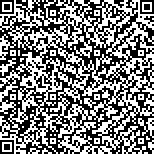| 摘要: |
| [目的]通过查找城镇化率数据及构建驱动力指标体系,试图分析淮海经济区城镇化时空格局并辨识其驱动力。[方法]基于淮海经济区各市统计年鉴中的城镇化率,利用变异系数法监测2005~2015年淮海经济区域城镇化时空差异,在此基础上运用GIS Logistic耦合回归模型识别主要驱动力,以获取淮海经济区近10年来城镇化发展健康情况。[结果]淮海经济区城镇化水平在时间维度上呈上升趋势,空间上表现为城镇化率由中心城市向周边辐射型增长,表明中心城市的带动作用较强。同时,不同时期城镇化水平的驱动力有所不同, 2005年,主要驱动力为人均GDP、人口密度、距中心城市距离; 2010年,人均GDP被非农人口比重代替; 2015年,主要驱动力变为人均GDP、人均固定资产投资额、二、三产业增加值占GDP的比重。淮海经济区城镇化水平差异呈现出先增大后减小的发展趋势,且在不同城镇化发展时期主要动力有所不同,中高城镇化率地区分布已从零星式的点状分布发展为连片式的条带状分布,发展形势良好。[结论]2005~2015年淮海经济区城镇化水平呈不断上升趋势,在不同时期呈现出不同的变化特征。可通过提高各区域的主体功能化、推进城镇化发展的差异性建设、吸引国内外资本等方式提高淮海经济区的城镇化水平。 |
| 关键词: 城镇化变异系数法 Logistic回归分析驱动力淮海经济区 |
| DOI: |
| 分类号:F207;F224 |
| 基金项目:安徽省教育厅人文社会科学重点研究基地重点项目“淮海经济区协同发展战略与一带一路战略的对接研究——以皖北地区为例”(SK2017A0357); 淮北师范大学共青团创新项目“差异化战略视野下师范类高校共青团工作组织体系创新研究”(gqt201709) |
|
| THE SPATIAL-TEMPORAL PATTERN AND DRIVING MECHANISMS OF THE DEVELOPMENT OF URBANIZATION IN HUAIHAI ECONOMIC ZONE |
|
Chen Jingxiao
|
|
School of Management,Huaibei Normal University,Huaibei 235000,China
|
| Abstract: |
| By analyzing the spatial-temporal pattern of urbanization and driving force, the status of urbanization in Huaihai Economic Zone in recent 10 years was analyzed, and the driving force of urbanization were analyzed . Based on the urbanization rate in City Statistical Yearbook, we used variation coefficient method to monitor the urbanization spatial difference in Huaihai economic region during 2005~2015.And based on the coupled GIS-Logistic regression model,we recognized the main driving force in order to obtain the healthy status of Huaihai Economic Zone development in recent 10 years. The results showed that the urbanization level of Huaihai Economic Zone showed an upward trend in temporal, and the urbanization rate increased from the central city to the periphery in spatial, which indicated that the driving role of the central city was stronger. At the same time, the driving mechanism of urbanization level varies in different periods, in 2005, the main driving force were the per capita GDP, population density, the distance from the center of the city; in 2010, the per capita GDP was replaced the proportion of non-agricultural population; in 2015, the main driving force were the per capita GDP, per capita manufacturing and producer services investment in fixed assets, the added value of the proportion of GDP. The difference of urban development trend of Huaihai Economic Zone level increased and then decreased, and in the different development period of urbanization main driving power varied, the high rate of urbanization area distribution changed from sporadic distribution point to banded distribution, and the development situation was good. The scientific identification of spatial-temporal patterns and driving factors of urbanization in Huaihai Economic Zone can provide effective suggestions for speeding up urbanization development in Huaihai Economic Zone. |
| Key words: urbanization variation coefficient method Logistic regression analysis driving mechanism Huaihai Economic Zone |

